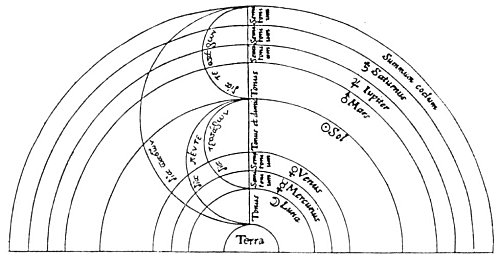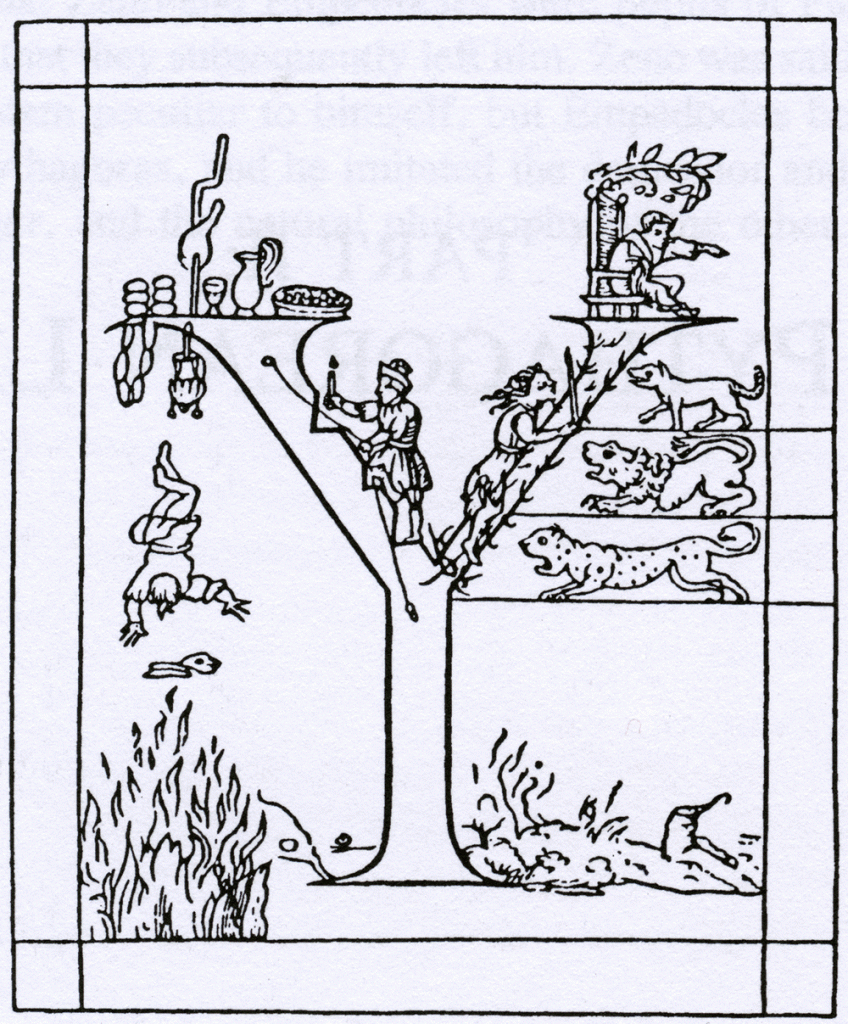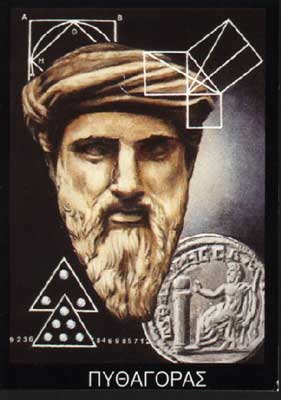p. 69
CONCERNING the secret significance of numbers there has been much speculation. Though many interesting discoveries have been made, it may be safely said that with the death of Pythagoras the great key to this science was lost. For nearly 2500 years philosophers of all nations have attempted to unravel the Pythagorean skein, but apparently none has been successful. Notwithstanding attempts made to obliterate all records of the teachings of Pythagoras, fragments have survived which give clues to some of the simpler parts of his philosophy. The major secrets were never committed to writing, but were communicated orally to a few chosen disciples. These apparently dated not divulge their secrets to the profane, the result being that when death sealed their lips the arcana died with diem.
Certain of the secret schools in the world today are perpetuations of the ancient Mysteries, and although it is quite possible that they may possess some of the original numerical formulæ, there is no evidence of it in the voluminous writings which have issued from these groups during the last five hundred years. These writings, while frequently discussing Pythagoras, show no indication of a more complete knowledge of his intricate doctrines than the post-Pythagorean Greek speculators had, who talked much, wrote little, knew less, and concealed their ignorance under a series of mysterious hints and promises. Here and there among the literary products of early writers are found enigmatic statements which they made no effort: to interpret. The following example is quoted from Plutarch:
“The Pythagoreans indeed go farther than this, and honour even numbers and geometrical diagrams with the names and titles of the gods. Thus they call the equilateral triangle head-born Minerva and Tritogenia, because it may be equally divided by three perpendiculars drawn from each of the angles. So the unit they term Apollo, as to the number two they have affixed the name of strife and audaciousness, and to that of three, justice. For, as doing an injury is an extreme on the one side, and suffering one is an extreme on the on the one side, and suffering in the middle between them. In like manner the number thirty-six, their Tetractys, or sacred Quaternion, being composed of the first four odd numbers added to the first four even ones, as is commonly reported, is looked upon by them as the most solemn oath they can take, and called Kosmos.” (Isis and Osiris.)
Earlier in the same work, Plutarch also notes: “For as the power of the triangle is expressive of the nature of Pluto, Bacchus, and Mars; and the properties of the square of Rhea, Venus, Ceres, Vesta, and Juno; of the Dodecahedron of Jupiter; so, as we are informed by Eudoxus, is the figure of fifty-six angles expressive of the nature of Typhon.” Plutarch did not pretend to explain the inner significance of the symbols, but believed that the relationship which Pythagoras established between the geometrical solids and the gods was the result of images the great sage had seen in the Egyptian temples.
Albert Pike, the great Masonic symbolist, admitted that there were many points concerning which he could secure no reliable information. In his Symbolism, for the 32° and 33°, he wrote: “I do not understand why the 7 should be called Minerva, or the cube, Neptune.” Further on he added: “Undoubtedly the names given by the Pythagoreans to the different numbers were themselves enigmatical and symbolic-and there is little doubt that in the time of Plutarch the meanings these names concealed were lost. Pythagoras had succeeded too well in concealing his symbols with a veil that was from the first impenetrable, without his oral explanation * * *.”
This uncertainty shared by all true students of the subject proves conclusively that it is unwise to make definite statements founded on the indefinite and fragmentary information available concerning the Pythagorean system of mathematical philosophy. The material which follows represents an effort to collect a few salient points from the scattered records preserved by disciples of Pythagoras and others who have since contacted his philosophy.
METHOD OF SECURING THE NUMERICAL POWER OF WORDS
The first step in obtaining the numerical value of a word is to resolve it back into its original tongue. Only words of Greek or Hebrew derivation can be successfully analyzed by this method, and all words must be spelled in their most ancient and complete forms. Old Testament words and names, therefore, must be translated back into the early Hebrew characters and New Testament words into the Greek. Two examples will help to clarify this principle.

Moe is the founder of GnosticWarrior.com. He is a father, husband, author, martial arts black belt, and an expert in Gnosticism, the occult, and esotericism.







